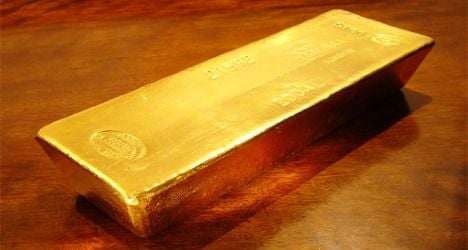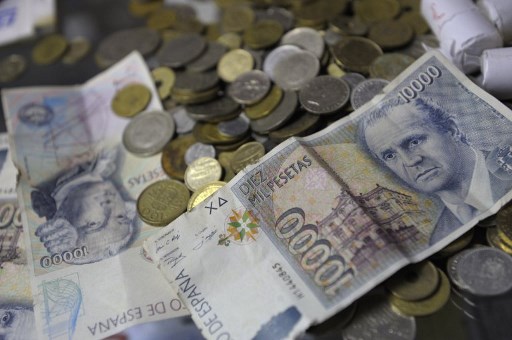The Swiss National Bank shocked markets on Tuesday by placing a floor on the euro’s value against a surging Swiss franc, which like gold is seen as a traditional safe bet among investors.
“This surprise move from the SNB is gold beneficial in the long run,” said Andrey Kryuchenkov, a commodities analyst at Russian financial group VTB Capital.
“And, assuming that risk aversion escalates from here, bullion is still your investor darling.”
The SNB set a minimum exchange rate of 1.20 francs per euro, saying the current value of the Swiss currency was a threat to the economy.
The Swiss franc has risen strongly in response to the eurozone debt crisis, hitting Swiss exporters and the tourism industry hard.
Gold meanwhile has set a series of record highs over the past few months, most recently on Tuesday when it reached an all-time peak of $1,921.15 an ounce.
“Longer-term, this SNB decision should strengthen gold’s claim as a safe-haven asset and will likely be much in demand for wealth preservation,” said Credit Agricole analyst Robin Bhar. Gold is also a good hedge against inflation.
Analysts at Standard Chartered said investors may seek out other safe-haven alternatives as a result of the Swiss action.
“In Europe, the Scandinavian currencies such as the Norwegian krone and Swedish krona may see further appreciation pressure … The Japanese yen may also see its traditional safe-haven role enhanced by the Swiss move,” they wrote in a note to clients.
Despite gold’s attraction, pension funds tend to invest only 2.0-5.0 percent of their assets in the precious metal, preferring more liquid safe-havens such as US government bonds, said Anne-Laure Tremblay, an analyst at BNP Paribas.
She told AFP that US Treasuries were far easier to convert into cash because they formed part of much bigger market than gold.
Tremblay added that gold’s surge was not a bubble about to burst.
“Current fundamentals for gold — tight supplies and strong demand — coupled with the macro-economic and financial environment justifies the hike in prices,” she said.
Industry body the World Gold Council recently predicted that the metal used for jewellery and in dentistry would experience sustained demand from key markets India and China this year despite its high price.



 Please whitelist us to continue reading.
Please whitelist us to continue reading.
Member comments